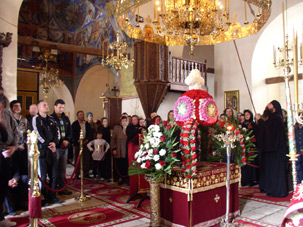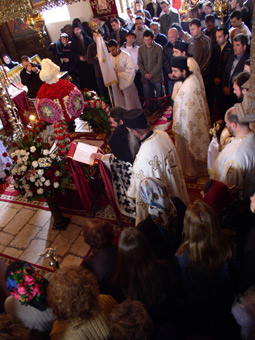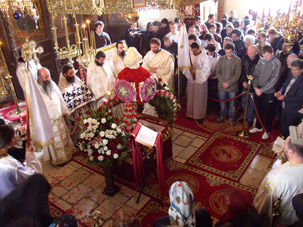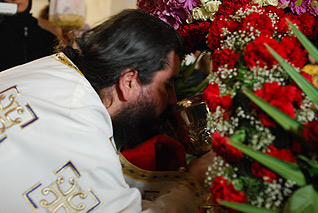Divine services at the Bigorski monastery for the week of Holy Passions of our Lord
(
18.04.2009
)
On Holy Thursday, as given by the Holy Fathers, according to the tradition they inherited from the Holy Apostles and the Gospels, we celebrate the following four events: washing of the feet, the Last Supper, the prayer of our Lord and the betrayal of Judas. When He washed the feet of his disciples, our God showed us just how high we can raise ourselves through humbleness, teaching us with His example that whoever wants to be the first, he should be the last and servant to all. Then, by performing the Pascha at the Last Supper, our Savior established the greatest Holy Sacrament – the Holy Eucharist, i.e. the communion with the Body and Blood of Christ. Later we fallow Christ to the
Finally, stabbed as if with a knife in our hearts, we go along with Him to the place of Golgotha, to get crucified together, to cry because of this great injustice: Today He hangs on the Cross…
Tears fall down, as the Abbot of the Bigorski monastery, crashed with pain, carries the Cross along the monastery steps, taking us back to the historical Jerusalem, where Christ, bent down under the weight of the Cross, covered with blood, slowly climbs up to the place of His crucifiction. In silence, we enter the church, and here, under the Cross, the novice Kristijan Nasevski bowes in front of the Abbot, and from him as if from the hands of Christ Himself, he receives a monastic cap. And again the mourning of Christ continues. That night, the faithful believers, like the myrrh-bearing women, spend the night in prayer in front of the Holy Cross.
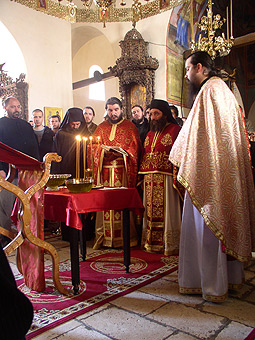
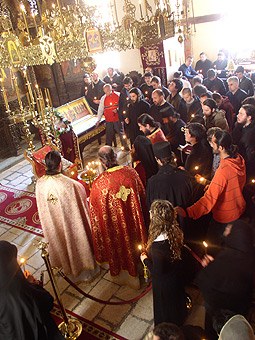
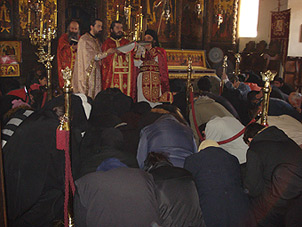
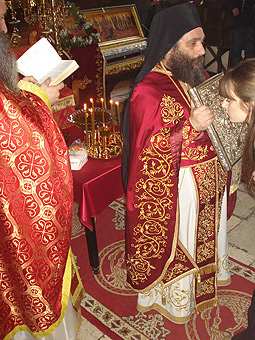
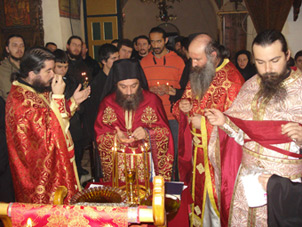
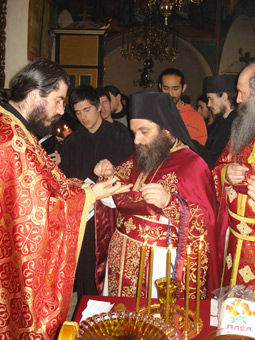
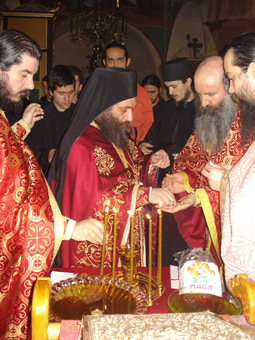
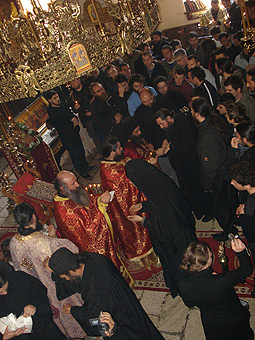
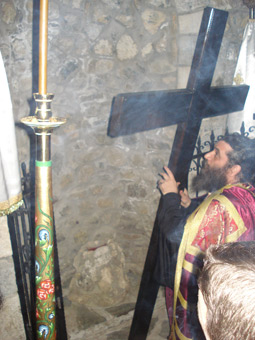
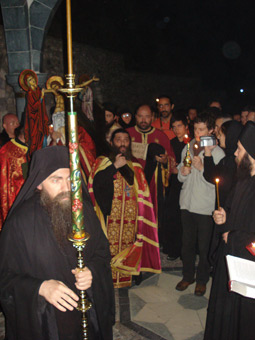
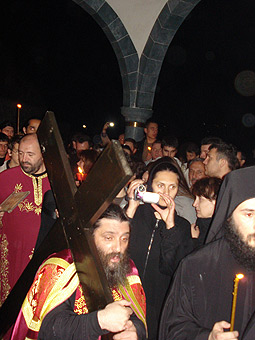
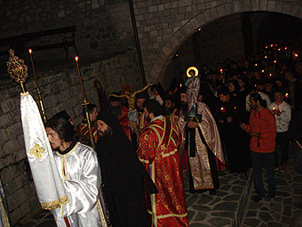
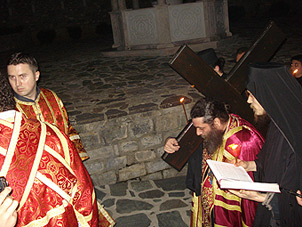
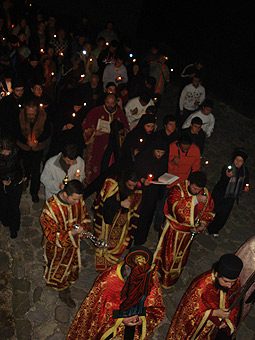
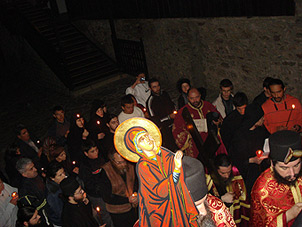
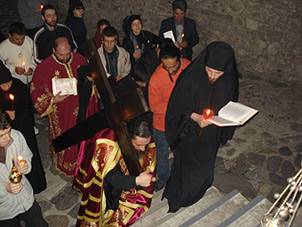
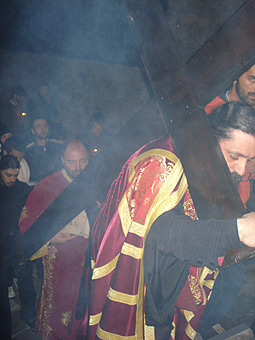
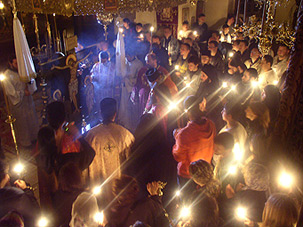
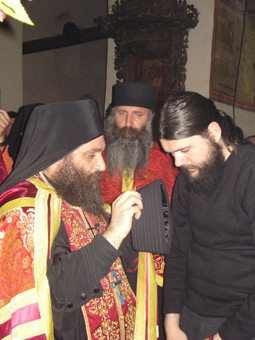
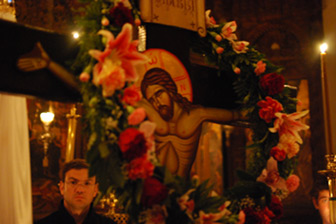
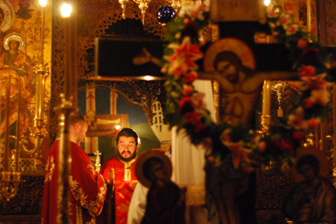
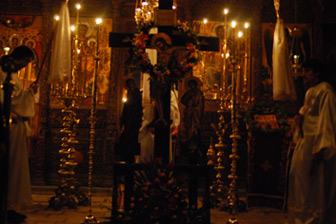
Holy and Great Friday
In the morning, durring the Divine service, Christ is burried in front of our eyes. Archimandrite Parthenious comes out with a white cloth, takes down Christ from the Cross, and similarly to the noble Joseph, he covers Christ’s body with the white cloth and cosumed by pain he takes it to the altar. Now the cross is replaced by a gorgeous flowery tomb, the symbol of Christ’s grave. This enchanting waterfall of flowers is a work of the skillful hands of the Abbot and an expression of his great love towards our Saviour. The wonderful verses echoe down in the church: Thou, Who are adorned with Light as if with a garment…
The hieromonks in a mourning procession slowly carry the Epitaphios – the holy body of Crist and lay it down in the flowery tomb. The merciful God is laid down in His grave.
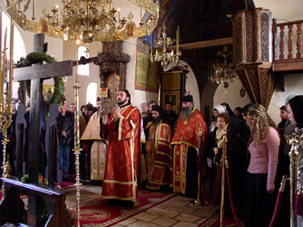
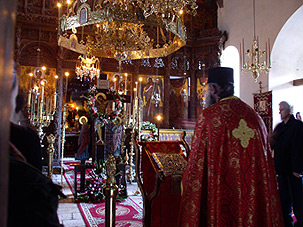
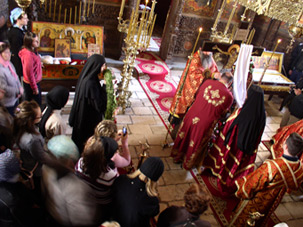
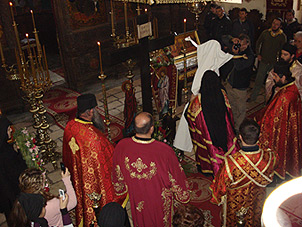
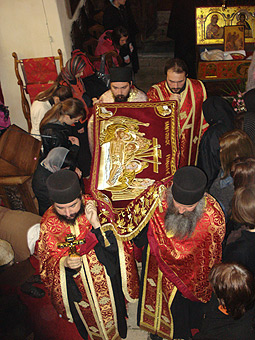
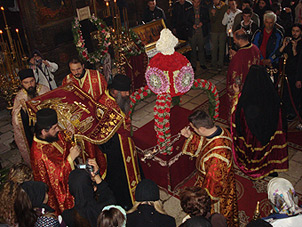
The Holy Friday evening
On the eve of Holy Friday we gather again around the tomb in order to chant sad songs, thus mourn the burried Christ together with His Holy Mother. The entire church, all the present sing together the wonderful verses, which divided in three parts, express all the pain of our Holy Theotokos. And again with a ceremonious lithany, the faithful leave the church once more, carrying for the last time the body of Christ, before the tomb is sealed.
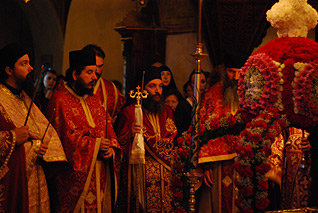
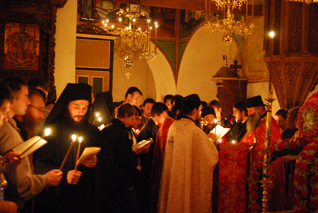
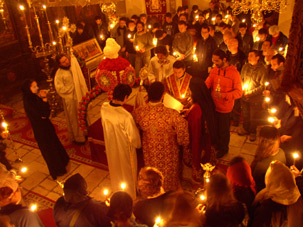
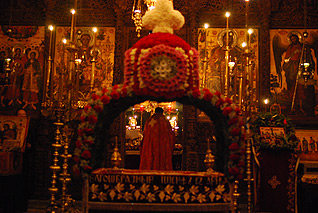
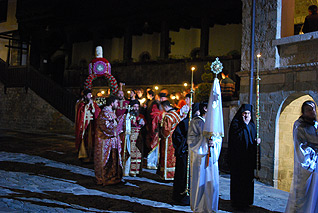
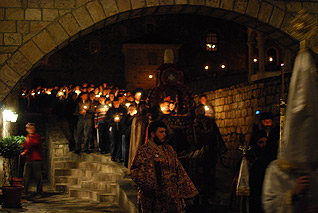
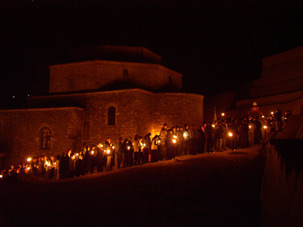
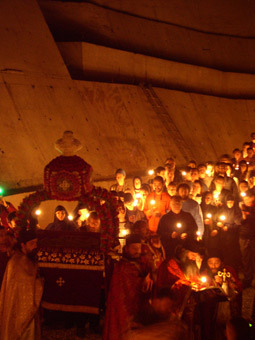
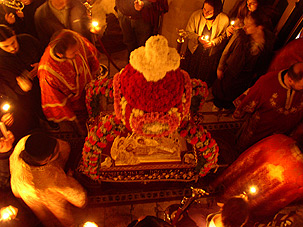
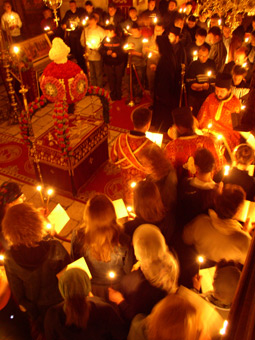
Holy Saturday
The Saturday morning is an especial experience. The altar is closed similarly to the sealed grave, and the Divine Liturgy is preformed on the flowery tomb which serves as the Holy Table. And already the joy of Christ’s resurrection can be foreseen, since the Tomb is empty and the sadness transforms into hope and happy anticipation of the most holy and most festive night.
